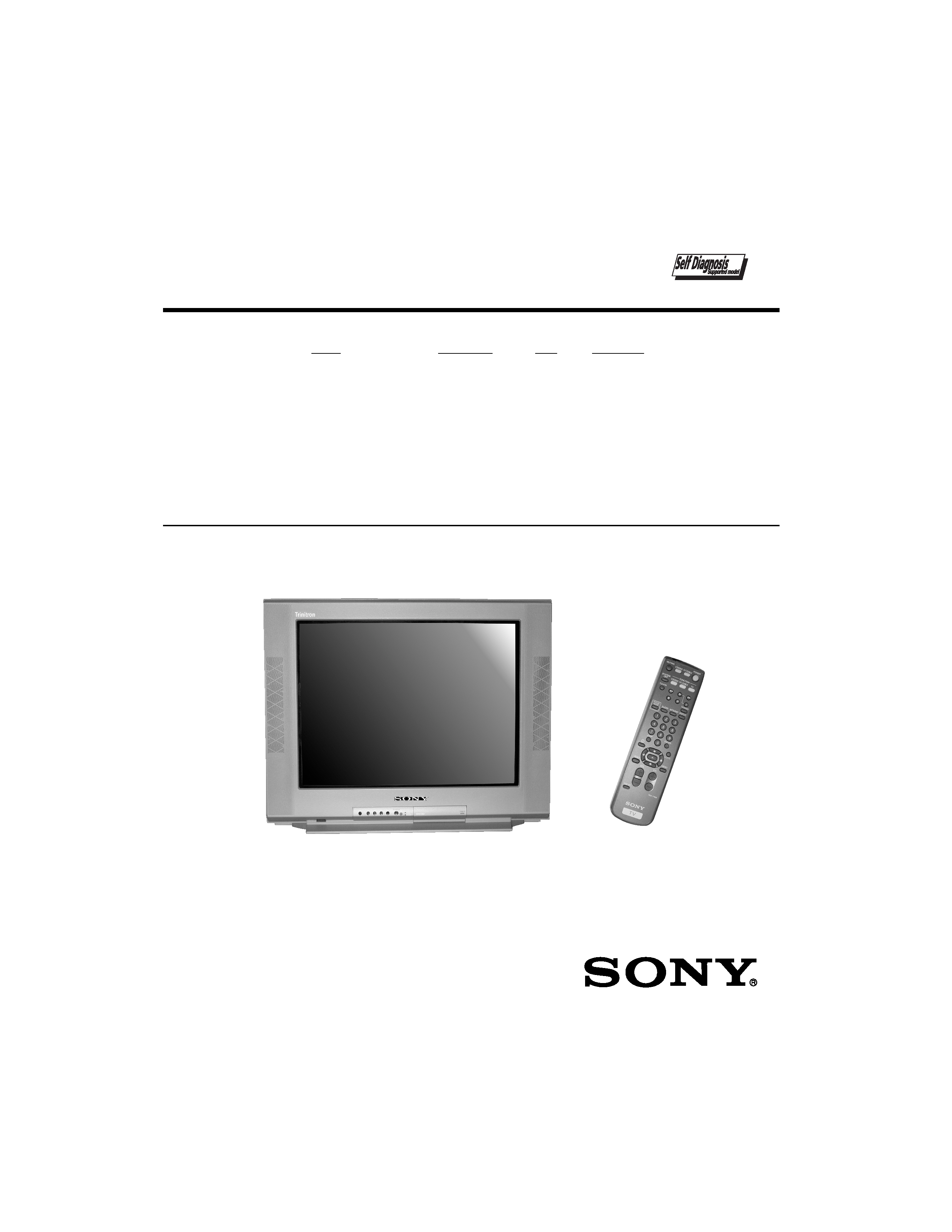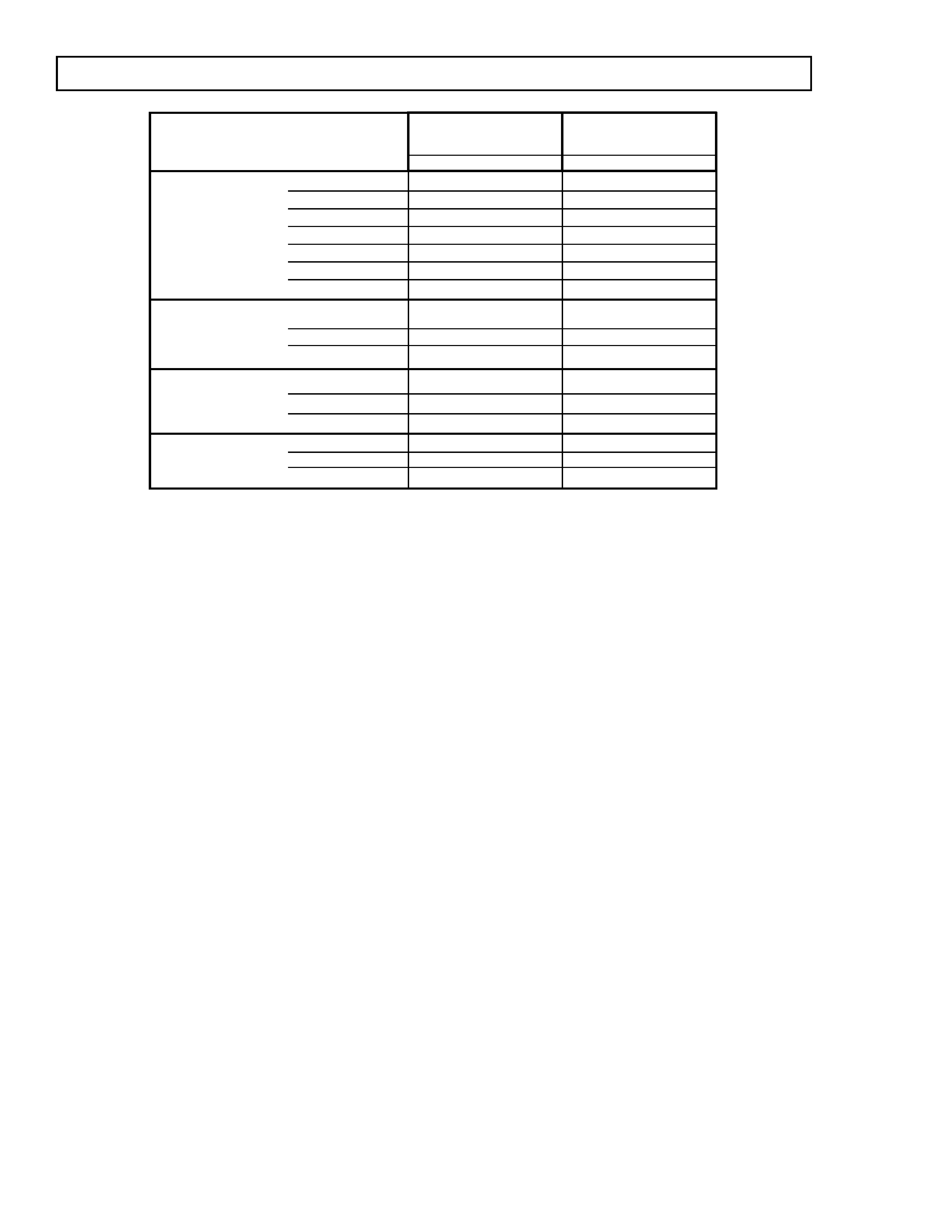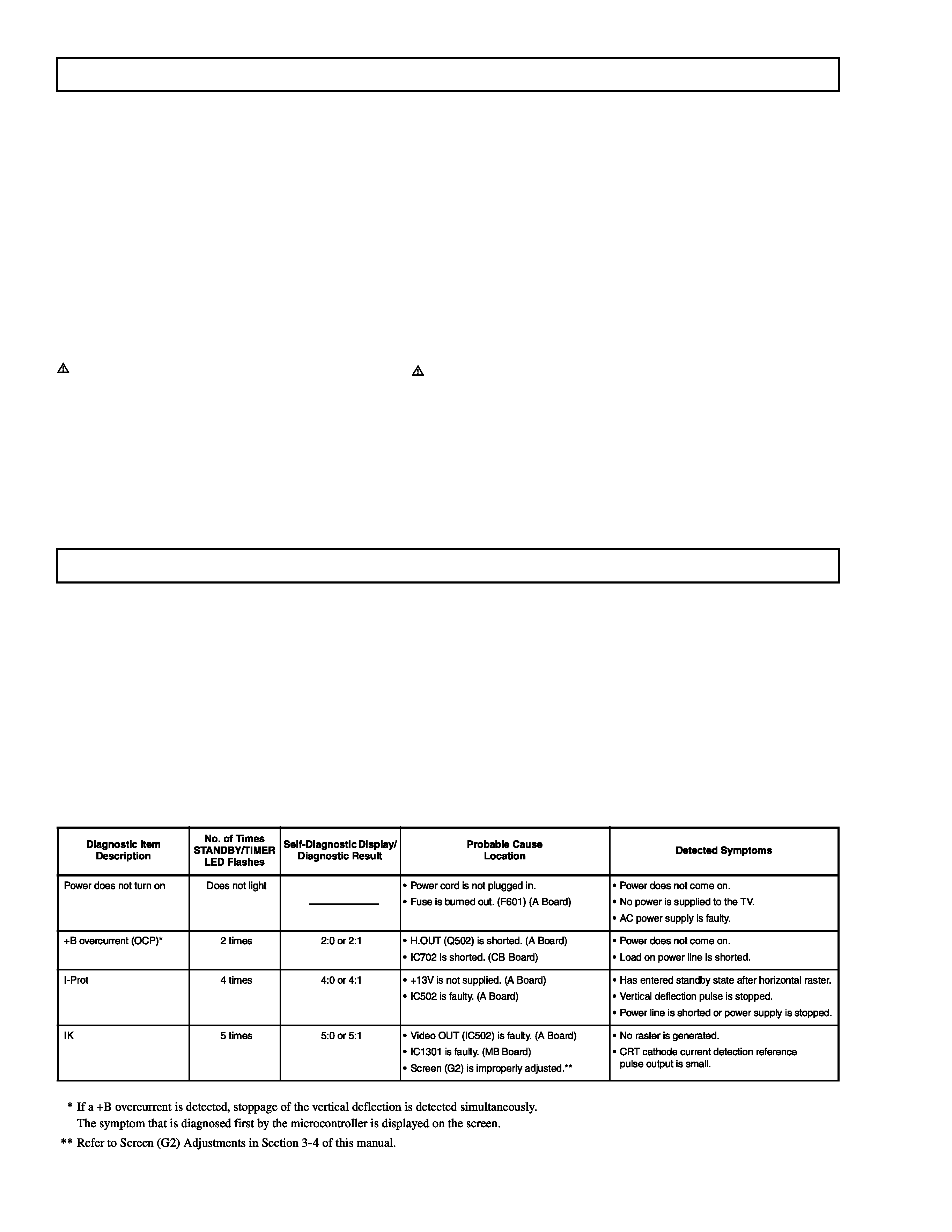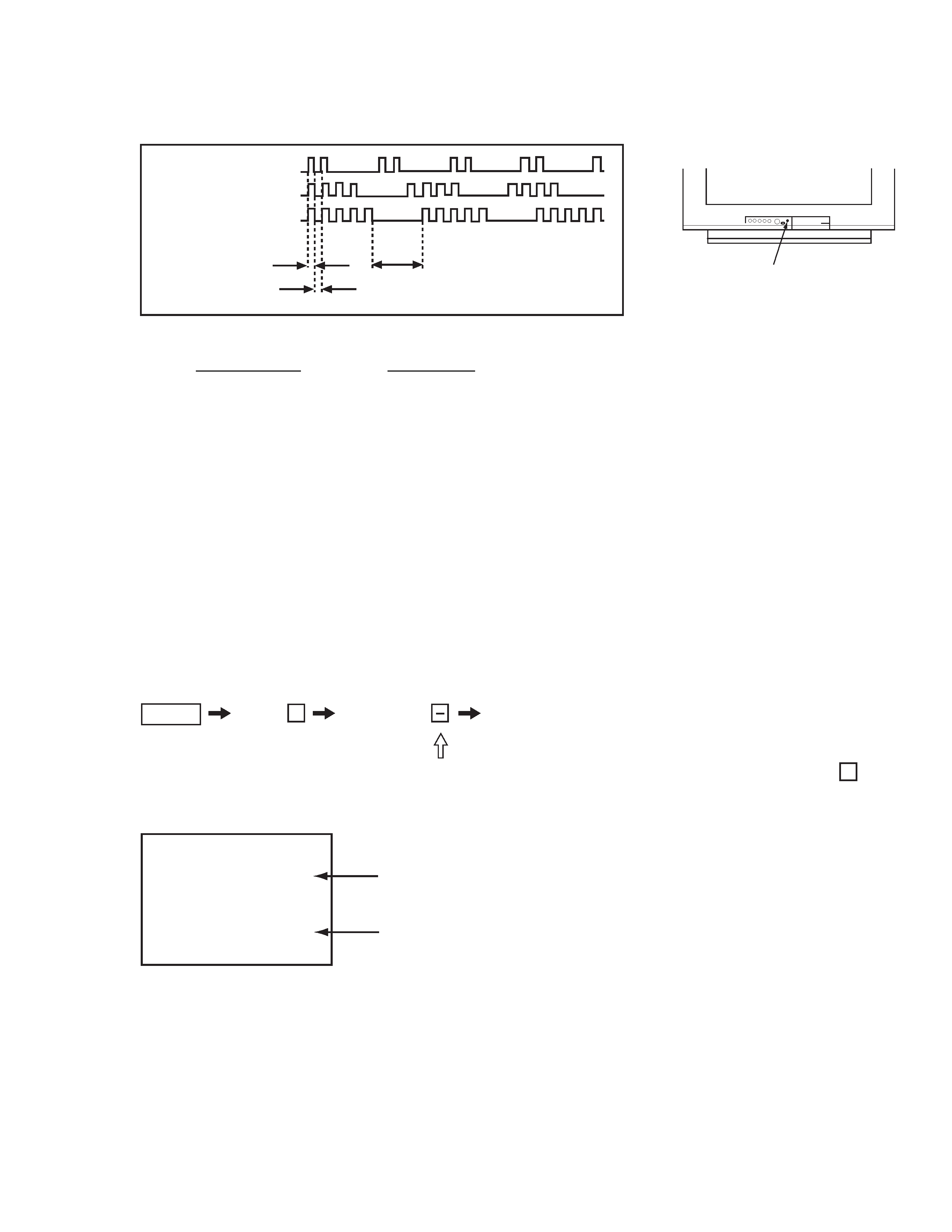
SERVICE MANUAL
BA-5 CHASSIS
MODEL
COMMANDER
DEST
CHASSIS NO.
KV-24FV12
RM-Y168
US
SCC-S40C-A
KV-24FV12
RM-Y168
CND
SCC-S41C-A
KV-25FV12
RM-Y168
E
SCC-S38G-A
KV-25FV12A
RM-Y168
E
SCC-S38H-A
KV-25FV12C
RM-Y168
E
SCC-S38J-A
TRINITRON® COLOR TV
RM-Y168
KV-25FV12A
881 Front.p65
3/9/00, 2:20 PM
1

-- 2 --
KV-24FV12/25FV12/25FV12A/25FV12C
SPECIFICATIONS
Design and specifications are subject to change without notice.
Television system
American TV standard/NTSC
PAL M, N (KV-25FV12A ONLY)
Channel coverage
VHF:2-13/UHF:14-69/CATV:1-125
Visible screen size
24" picture measured diagonally
Actual screen size
25" picture measured diagonally
Antenna
75 ohm external antenna terminal for VHF/UHF
Supplied accessories
Remote Commander RM-Y168
Size AA (R6) batteries (2)
Optional accessories
Connecting cables: VMC-810S/820S, VMC-720M,
YC-15V/30V, RK74A
U/V mixer EAC-66
KV-24FV12
KV-25FV12
KV-25FV12A
KV-25FV12C
Power requirements
120V, 60Hz
120-220V, 50/60Hz
Number of inputs/outputs
Video
1)
22
S Video
2)
11
Audio
3)
22
Audio Out
4)
11
Headphone Out
4)
11
Speaker output(W)
10W x 2
10W x 2
Power Consumption(W)
In use(Max)
150W
150W
In standby
1W
1W
Dimensions(W/H/D)
(mm)
652 x 524.3 x 467.3mm
652 x 524.3 x 467.3mm
(in)
25
2/3 x 20 2/3 x 18 5/12
25
2/3 x 20 2/3 x 18 5/12
Mass
(kg)
37kg
37kg
(lbs)
81 lbs 9oz
81 lbs 9oz
1)
1 Vp-p 75 ohms unbalanced, sync negative
2)
Y: 1 Vp-p 75 ohms unbalanced, sync negative
C: 0.286 Vp-p (Burst signal), 75 ohms
3)
500mVrms (100% modulation), impedance: 47kilohms
4)
More than 408 mVrms at the maximum volume setting (variable)
More than 408 mVrms (fix)

-- 3 --
KV-24FV12/25FV12/25FV12A/25FV12C
Section
Title
Page
Warnings and Cautions ............................................................................................................................................................... 4
Self-Diagnostic Function ............................................................................................................................................................. 4
Safety Check-Out Instructions .................................................................................................................................................... 7
1.
GENERAL ........................................................................................................................................................... 8
2.
DISASSEMBLY
2-1.
Rear Cover Removal ..................................................................................................................................................... 13
2-2.
Chassis Assembly Removal ......................................................................................................................................... 13
2-3.
Service Position ............................................................................................................................................................ 13
2-4.
Picture Tube Removal ................................................................................................................................................... 14
3.
SET-UP ADJUSTMENTS
3-1.
Beam Landing ............................................................................................................................................................... 15
3-2.
Convergence ................................................................................................................................................................. 16
3-3.
Focus ............................................................................................................................................................................. 17
3-4.
Screen (G2) ................................................................................................................................................................... 17
3-5.
Method of Setting the Service Adjustment Mode ......................................................................................................... 18
3-6.
White Balance Adjustments .......................................................................................................................................... 18
4.
SAFETY RELATED ADJUSTMENTS
4-1.
R564 Confirmation Method (HV Hold-Down Confirmation and Readjustments) .................................................... 19
4-2.
B+ Voltage Confirmation and Adjustment ..................................................................................................................... 19
5.
CIRCUIT ADJUSTMENTS
5-1.
Setting the Service Adjustment Mode .......................................................................................................................... 21
5-2.
Memory Write Confirmation Method ............................................................................................................................. 21
5-3.
Adjustment Buttons and Indicators ............................................................................................................................... 21
5-4.
A Board Adjustments .................................................................................................................................................... 23
6.
DIAGRAMS
6-1.
Block Diagram ............................................................................................................................................................... 27
6-2.
Circuit Board Location .................................................................................................................................................. 31
6-3.
Printed Wiring Boards and Schematic Diagrams ......................................................................................................... 31
·
A Board .................................................................................................................................................................... 33
·
MB Board ................................................................................................................................................................. 39
·
CB Board .................................................................................................................................................................. 45
·
HZ Board .................................................................................................................................................................. 46
·
K Board .................................................................................................................................................................... 47
·
VB Board .................................................................................................................................................................. 48
6-4.
Semiconductors ............................................................................................................................................................ 49
7.
EXPLODED VIEW
7-1.
Chassis (KV-24FV12 ONLY) ........................................................................................................................................ 50
7-2.
Chassis (KV-25FV12A ONLY) ....................................................................................................................................... 51
7-3.
Chassis (KV-25FV12/25FV12C ONLY) ........................................................................................................................ 52
8.
ELECTRICAL PARTS LIST ................................................................................................................................................. 53
TABLE OF CONTENTS

-- 4 --
KV-24FV12/25FV12/25FV12A/25FV12C
WARNINGS AND CAUTIONS
CAUTION
SHORT CIRCUIT THE ANODE OF THE PICTURE TUBE
AND THE ANODE CAP TO THE METAL CHASSIS, CRT
SHIELD, OR CARBON PAINTED ON THE CRT, AFTER
REMOVING THE ANODE.
WARNING!!
AN ISOLATION TRANSFORMER SHOULD BE USED
DURING ANY SERVICE TO AVOID POSSIBLE SHOCK
HAZARD, BECAUSE OF LIVE CHASSIS. THE CHASSIS
OF THIS RECEIVER IS DIRECTLY CONNECTED TO THE
AC POWER LINE.
SAFETY-RELATED COMPONENT WARNING!!
COMPONENTS IDENTIFIED BY SHADING AND MARK
ON THE SCHEMATIC DIAGRAMS, EXPLODED VIEWS,
AND IN THE PARTS LIST ARE CRITICAL FOR SAFE
OPERATION. REPLACE THESE COMPONENTS WITH
SONY PARTS WHOSE PART NUMBERS APPEAR AS
SHOWN IN THIS MANUAL OR IN SUPPLEMENTS
PUBLISHED BY SONY. CIRCUIT ADJUSTMENTS THAT
ARE CRITICAL FOR SAFE OPERATION ARE IDENTIFIED
IN THIS MANUAL. FOLLOW THESE PROCEDURES
WHENEVER CRITICAL COMPONENTS ARE REPLACED
OR IMPROPER OPERATION IS SUSPECTED.
ATTENTION!!
APRES AVOIR DECONNECTE LE CAP DE L'ANODE, COURT-CIRCUITER
L'ANODE DU TUBE CATHODIQUE ET CELUI DE L'ANODE DU CAP AU
CHASSIS METALLIQUE DE L'APPAREIL, OU AU COUCHE DE CARBONE
PEINTE SUR LE TUBE CATHODIQUE OU AU BLINDAGE DU TUBE
CATHODIQUE.
ATTENTION!!
AFIN D'EVITER TOUT RESQUE D'ELECTROCUTION PROVENANT D'UN
CHÁSSIS SOUS TENSION, UN TRANSFORMATEUR D'ISOLEMENT DOIT ETRE
UTILISÉ LORS DE TOUT DÉPANNAGE. LE CHÁSSIS DE CE RÉCEPTEUR EST
DIRECTEMENT RACCORDÉ À L'ALIMENTATION SECTEUR.
ATTENTION AUX COMPOSANTS RELATIFS A LA SECURITE!!
LES COMPOSANTS IDENTIFIES PAR UNE TRAME ET PAR UNE MARQUE
SUR LES SCHEMAS DE PRINCIPE, LES VUES EXPLOSEES ET LES
LISTES DE PIECES SONT D'UNEIMPORTANCE CRITIQUE POUR LA
SECURITE DU FONCTIONNEMENT. NE LES REMPLACER QUE PAR DES
COMPOSANTS SONY DONT LE NUMERO DE PIECE EST INDIQUE DANS
LE PRESENT MANUEL OU DANS DES SUPPLEMENTS PUBLIES PAR SONY.
LES REGLAGES DE CIRCUIT DONT L'IMPORTANCE EST CRITIQUE POUR
LA SECURITE DU FONCTIONNEMENT SONT IDENTIFIES DANS LE
PRESENT MANUEL. SUIVRE CES PROCEDURES LORS DE CHAQUE
REMPLACEMENT DE COMPOSANTS CRITIQUES, OU LORSQU'UN
MAUVAIS FONTIONNEMENT SUSPECTE.
SELF-DIAGNOSTIC FUNCTION
The units in this manual contain a self-diagnostic function. If an error occurs, the STANDBY/TIMER LED will automatically begin to flash.
The number of times the LED flashes translates to a probable source of the problem. A definition of the STANDBY/TIMER LED flash
indicators is listed in the instruction manual for the user's knowledge and reference. If an error symptom cannot be reproduced, the Remote
Commander can be used to review the failure occurrence data stored in memory to reveal past problems and how often these problems occur.
Diagnostic Test Indicators
When an error occurs, the STANDBY/TIMER LED will flash a set number of times to indicate the possible cause of the problem. If there is
more than one error, the LED will identify the first of the problem areas.
Results for all of the following diagnostic items are displayed on screen. No error has occurred if the screen displays a "0".

-- 5 --
KV-24FV12/25FV12/25FV12A/25FV12C
Display of Standby/Timer LED Flash Count
2 times
4 times
5 times
LED ON 0.3 sec.
LED OFF 0.3 sec.
LED OFF
3 sec.
Diagnostic Item
Flash Count*
+B overcurrent
2 times
Vertical deflection stopped
4 times
White balance failure
5 times
*One flash count is not used for self-diagnostic.
Stopping the Standby/Timer LED Flash
Turn off the power switch on the TV main unit or unplug the power cord from the outlet to stop the STANDBY/TIMER LAMP from flashing.
Self-Diagnostic Screen Display
For errors with symptoms such as "power sometimes shuts off" or "screen sometimes goes out" that cannot be confirmed, it is possible
to bring up past occurrences of failure on the screen for confirmation.
To Bring Up Screen Test
In standby mode, press buttons on the Remote Commander sequentially, in rapid succession, as shown below:
Display
Channel 5
Sound volume
Note that this differs from entering the service mode (sound volume
).
Power ON
+
Self-Diagnostic Screen Display
SELF DIAGNOSTIC
2:
0
3:
N/A
0
4:
0
5:
1
101:
N/A
0
Numeral "0" means that no fault was detected.
Numeral "1" means a fault was detected one time only.
STANDBY/TIMER LED
